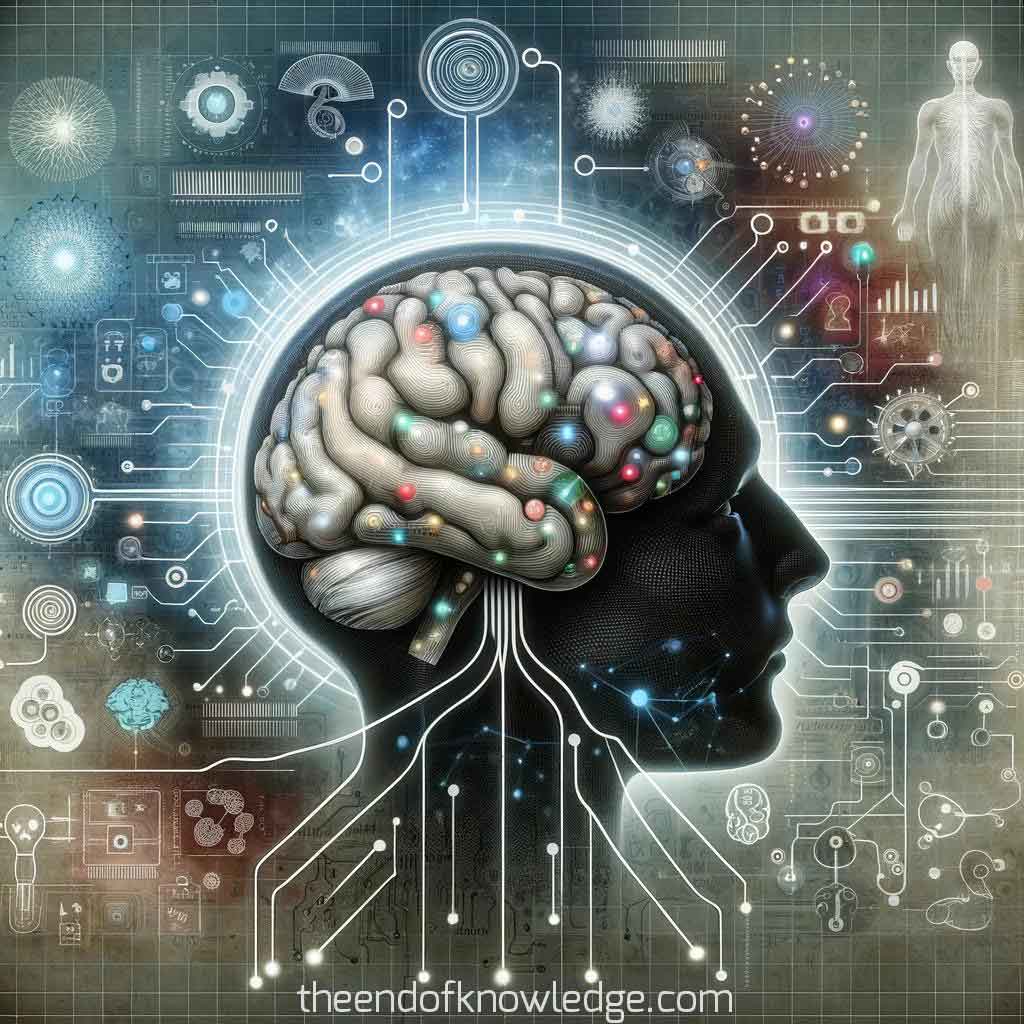 >
>
Concept Graph (using Gemini Ultra + Claude3):
Custom ChatGPT resume of the OpenAI Whisper transcription:
1.- Matt Botvinick's Background: Botvinick is the Director of Neuroscience Research at DeepMind and possesses expertise spanning cognitive psychology, computational neuroscience, and artificial intelligence.
2.- Understanding the Brain: Botvinick discusses the current understanding of the brain, noting that while high-level functions are increasingly clear, the understanding of neuronal mechanisms underlying these computations remains coarse.
3.- Psychology and Neuroscience Interconnection: Botvinick emphasizes a reluctance to distinguish between psychology and neuroscience. He views neuroscience as studying the brain's purpose, aligning with psychology's focus on understanding behavior and mental functions.
4.- Brain's Role in Behavior: He underscores the brain's primary role in producing adaptive behavior from perceptual inputs, highlighting this as a fundamental area of study in both psychology and neuroscience.
5.- Cognition and Physical Mechanisms: The conversation touches on the importance of grounding cognitive psychology's metaphorical mechanisms in physical processes to fully understand behavior and mental processes.
6.- Comparison with Genetics Research: Botvinick compares the current state of cognitive psychology to the early days of genetics, where metaphorical concepts like 'genes' were used before understanding their physical basis.
7.- Deep Learning and Cognitive Psychology: He discusses the shift in neural networks from modeling human cognition to industrial applications, noting his initial draw to the field due to its cognitive modeling aspects.
8.- Neural Networks and Science: Botvinick's interest in science was sparked by neural networks, particularly their application in understanding cognition, and he reflects on his academic journey through medical school and art history.
9.- Beauty and Mystery of the Brain: Botvinick expresses a deep fascination with the brain, especially the paradox of its complexity and integral role in shaping transparent, everyday experiences.
10.- Cognition, Consciousness, and AI: The discussion veers towards the intricacies of human cognition and consciousness, pondering whether artificial intelligence can encapsulate the richness of human experience.
11.- Artificial Intelligence and Human Experience: Botvinick emphasizes that AI discussions often miss the multi-layered nature of human experience, which includes emotions and a wide range of sensory inputs beyond cognition.
12.- Psychology's Insights and Limitations: He acknowledges psychology's critical contributions to understanding the mind, while also noting its limitations due to controlled experimental environments that may not reflect real-world complexities.
13.- Neuropsychology's Contributions: Botvinick lauds the creative and insightful experiments in neuropsychology, particularly those involving brain-damaged individuals, for advancing understanding of specific brain functions.
14.- Cognitive Flexibility and Frontal Damage: The conversation shifts to the prefrontal cortex's role in cognitive flexibility, emphasizing its importance in overriding habitual responses in favor of appropriate behaviors in novel situations.
15.- Controlled vs. Automatic Behavior: The distinction between controlled (goal-directed) and automatic (habitual) behavior is explored, highlighting the brain's ability to automate frequently performed actions while retaining the capacity for deliberate, goal-oriented activities.
16.- Artificial Intelligence and Habitual Behavior: Botvinick considers the implications of this distinction for AI research, suggesting that understanding habitual behavior could be crucial for advancing AI learning capabilities.
17.- Prefrontal Cortex and Behavioral Adaptation: He further discusses the prefrontal cortex's role in facilitating adaptive behavior, particularly in unusual or new situations, by overriding habitual responses.
18.- Cross-Species Brain Function Comparison: The discussion touches on the challenges and disagreements in comparing brain functions across species, especially in terms of cognitive flexibility and problem-solving abilities.
19.- Functional Differentiation in the Brain: Botvinick acknowledges the brain's functional differentiation, with different regions having distinct roles, while also noting the interconnectedness and complexity of these functions.
20.- Brain Information Transmission: The conversation delves into the mechanisms of information transmission in the brain, focusing on the significance of neuron spiking rates and the potential for deeper, more complex communication processes.
21.- Deep Learning and Brain Mechanisms: Botvinick sees deep learning networks as a reasonable approximation of brain mechanisms, highlighting the role of neuron spiking frequency in information transmission.
22.- Challenges in Understanding Brain Function: The dialogue acknowledges the difficulties in fully grasping brain functions, given the complex interplay of different brain regions and the intricacies of neuronal communication.
23.- Neural Networks as Cognitive Models: He reiterates the significance of neural networks in modeling human cognition, stressing the importance of these models in understanding the richness and complexity of cognitive processes.
24.- Flexibility and Adaptation in Human Behavior: The discussion emphasizes human behavior's characteristic flexibility and adaptability, a feature that current AI systems struggle to replicate.
25.- Integration of Psychology and AI: Botvinick reflects on the integration of psychology, particularly cognitive psychology, into AI research, considering the insights and limitations of psychological models in understanding AI.
26.- Group Behavior and Collective Intelligence: The conversation explores the role of group behavior in human intelligence and the potential of studying collective intelligence within AI frameworks.
27.- AI Learning Environments and Reinforcement Learning: The discussion touches on the importance of the environment's structure in AI learning, particularly in reinforcement learning contexts, and how this mirrors human learning processes.
28.- Cognitive Architecture and Environmental Interaction: Botvinick underscores the interdependence of cognitive architecture and environmental factors in shaping cognitive processes, both in humans and AI systems.
29.- Brain's Modular and Interconnected Nature: He elaborates on the brain's modular yet interconnected nature, highlighting the challenges in understanding a system that is neither fully modular nor completely undifferentiated.
30.- Future Directions in Neuroscience and AI: The dialogue concludes with reflections on the future of neuroscience and AI research, emphasizing the need for continued exploration into the mechanisms of cognition and brain function.
Interview byLex Fridman| Custom GPT and Knowledge Vault built byDavid Vivancos 2024